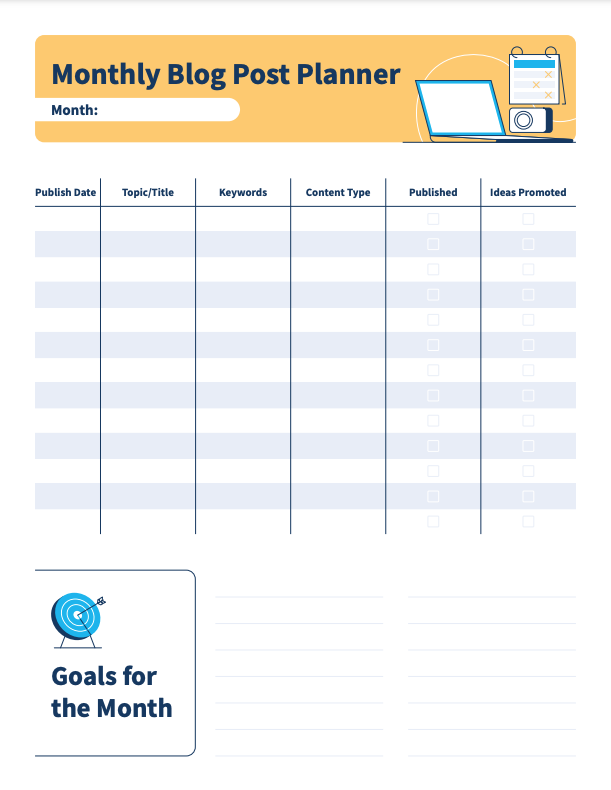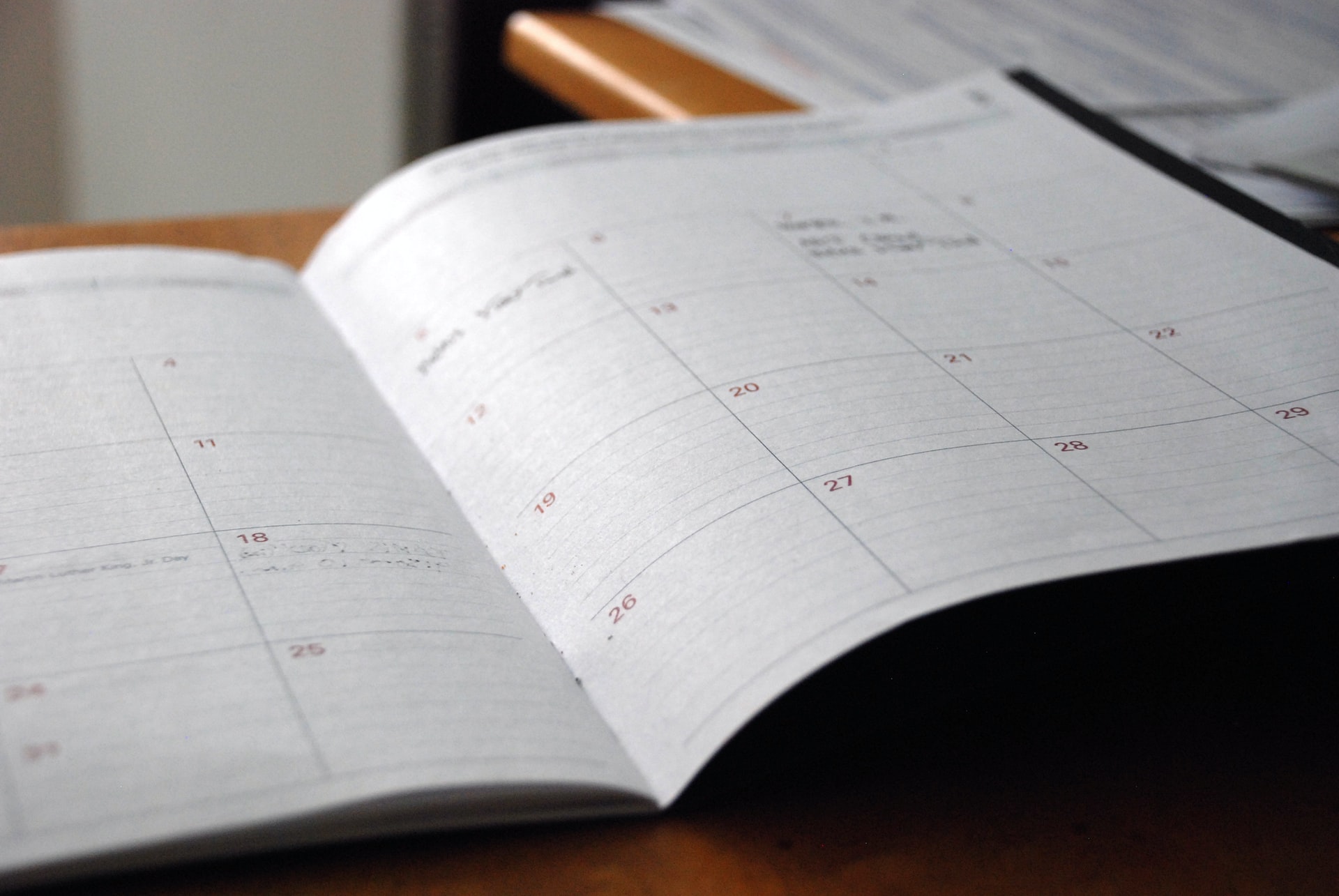Content Planning for Your Blog: Printable Post Planner
If you’re a blogger or digital marketer managing a blog for a small business, you’ve come to the right place! Whether you’re about to start a blog or trying to improve the one you already have, you need a template to stay organized along the way and plan your content effectively.
One of the main components of a successful blog is regular posting. In fact, the number one reason why blogs fail is inconsistent posting (due to not using templates and planners). Before implementing advanced SEO strategies to your blog, make sure you can commit to publishing new articles on a regular basis (two to four articles a week is optimal but try to post at least once a month). The type of blog that you have will help you determine exactly how often you post.
If you’re a blogger, solopreneur, or digital marketer working for a small business, your time is very limited, and every second is important for you. To improve productivity, you need to manage your time effectively — and one of the best ways to do that is by using templates for your repetitive tasks (brainstorming, planning, and scheduling blog content are often some of these).
Not only should you use a template to stay organized, but it’s also important that you plan your blogging and digital marketing strategies effectively. When it comes to blogging, the best way to do this by using a printable content planner.
This monthly blog post planner has everything you need as a blogger to stay organized and hit your goals month over month.
You can print a few and use them month by month to brainstorm and schedule your content ideas. Start by writing the topic and keyword, and then you can brainstorm title ideas. When you have a title, think about which content type this idea is best for. Once you have a few ideas, you can schedule your content for the month.
Finally, you’ll keep track of the blog post status by checking the “published” box. Don’t forget it’s also important that you promote your new blog post with other websites and on social media to get maximum exposure and get traffic to your blog. Once you’re done with that too, you can check the “ideas promoted” box.
Now you’re all set to manage your time effectively and schedule your blog posts each month. Use this blog post planner and make sure to publish new articles on a regular basis by setting goals. If you’re at the beginning, you can start with one post a month. Once you start getting more results, you can slowly start increasing this number.

How to Use AI-Powered SEO Tools for WordPress eCommerce
SEO is a critical factor in the success of any e-commerce WordPress store. As competition…
0 Comments11 Minutes
Why Short-Form Videos Are the Future of Content Marketing
Your Instagram customers spend over 50% of their time watching short-form videos and reels. Rather…
0 Comments12 Minutes
The Role of Digital Marketing in Business Growth
Online marketing touches every aspect of a business, whether it is initiating the idea or for an…
0 Comments3 Minutes
AI Meets Authenticity: Balancing Automation and Human Touch in Content Marketing
Is your brand starting to sound like a robot? In a world where algorithms write faster than any…
0 Comments8 Minutes
Essential Tools for Enhancing Web Design and UX Hosting
Have you ever visited a website that felt slow, clunky, or confusing? A website that is poorly…
0 Comments11 Minutes
How a Mini Cart Transformed My Store’s Shopping Experience
Okay, real talk—running an online store is hard. You think you’ve got everything figured out, you…
0 Comments9 Minutes
Balancing Your Security Initiatives With Industry Compliance Requirements
Managing a business today comes with a number of daily battles that need to be fought. Resources…
0 Comments11 Minutes
Best plugins to enhance the customer shopping experience
Customer experience is a key part of every online store. A good experience helps customers find…
0 Comments7 Minutes








